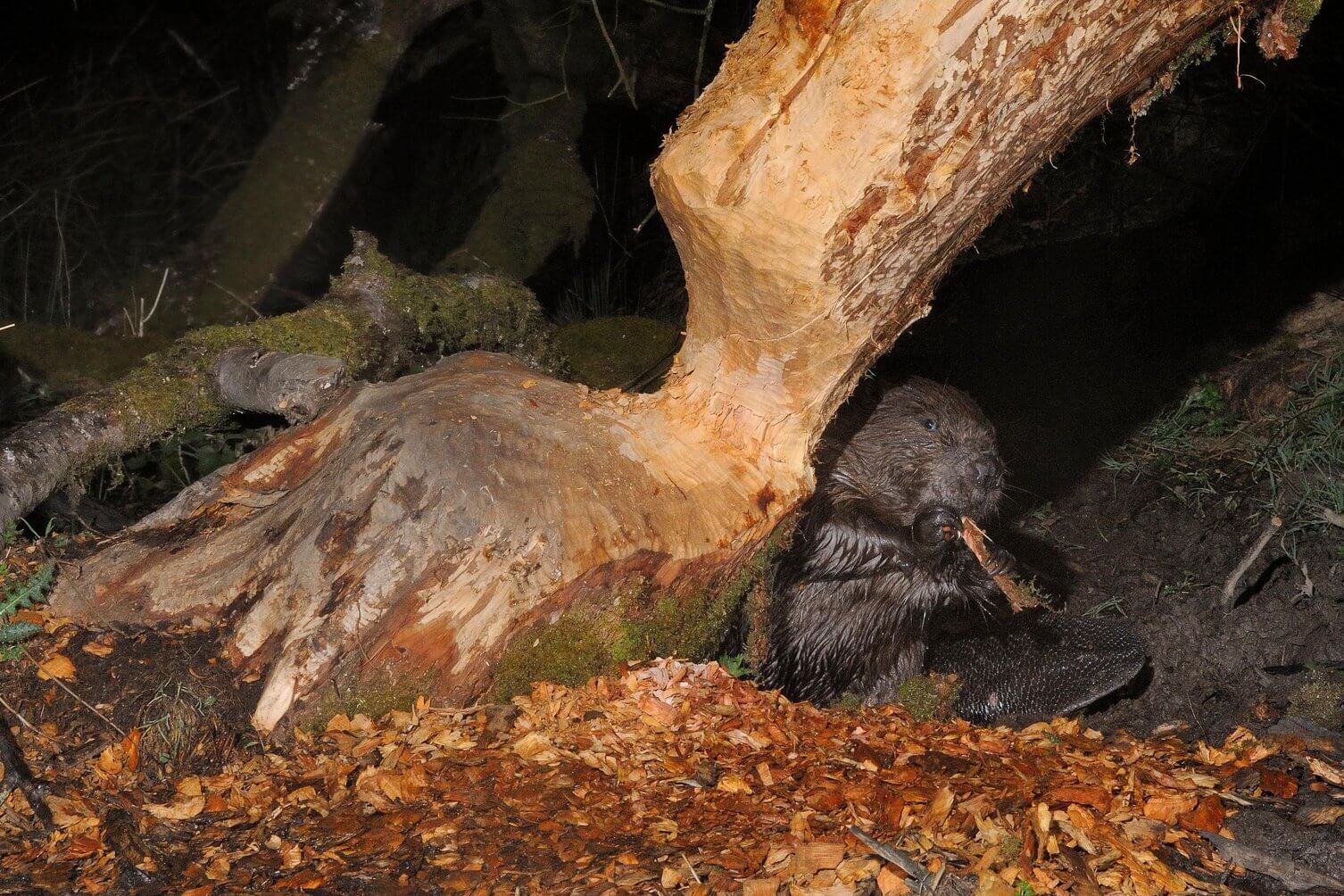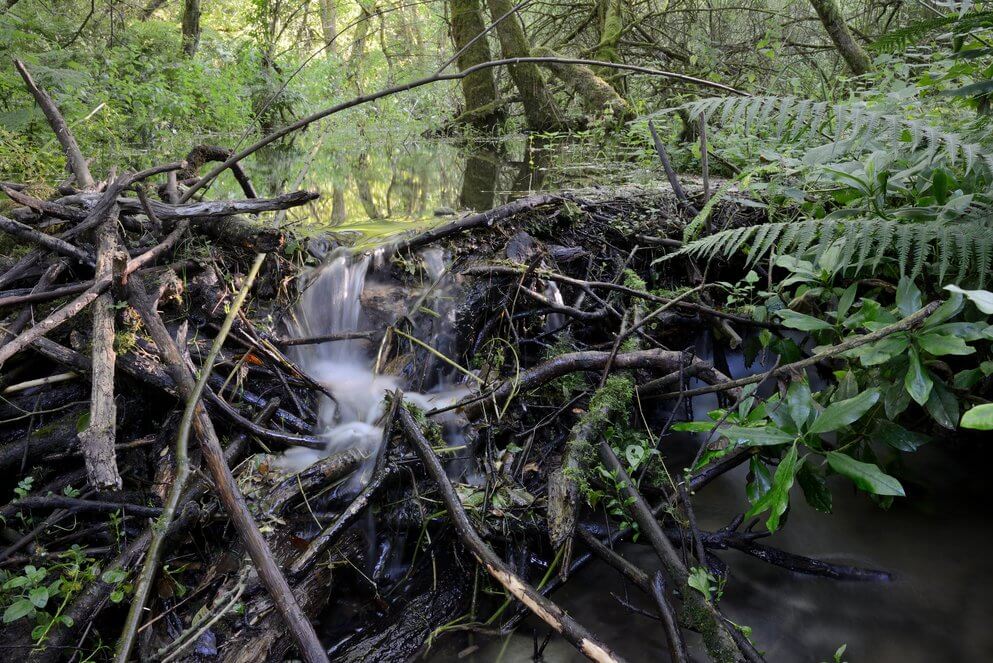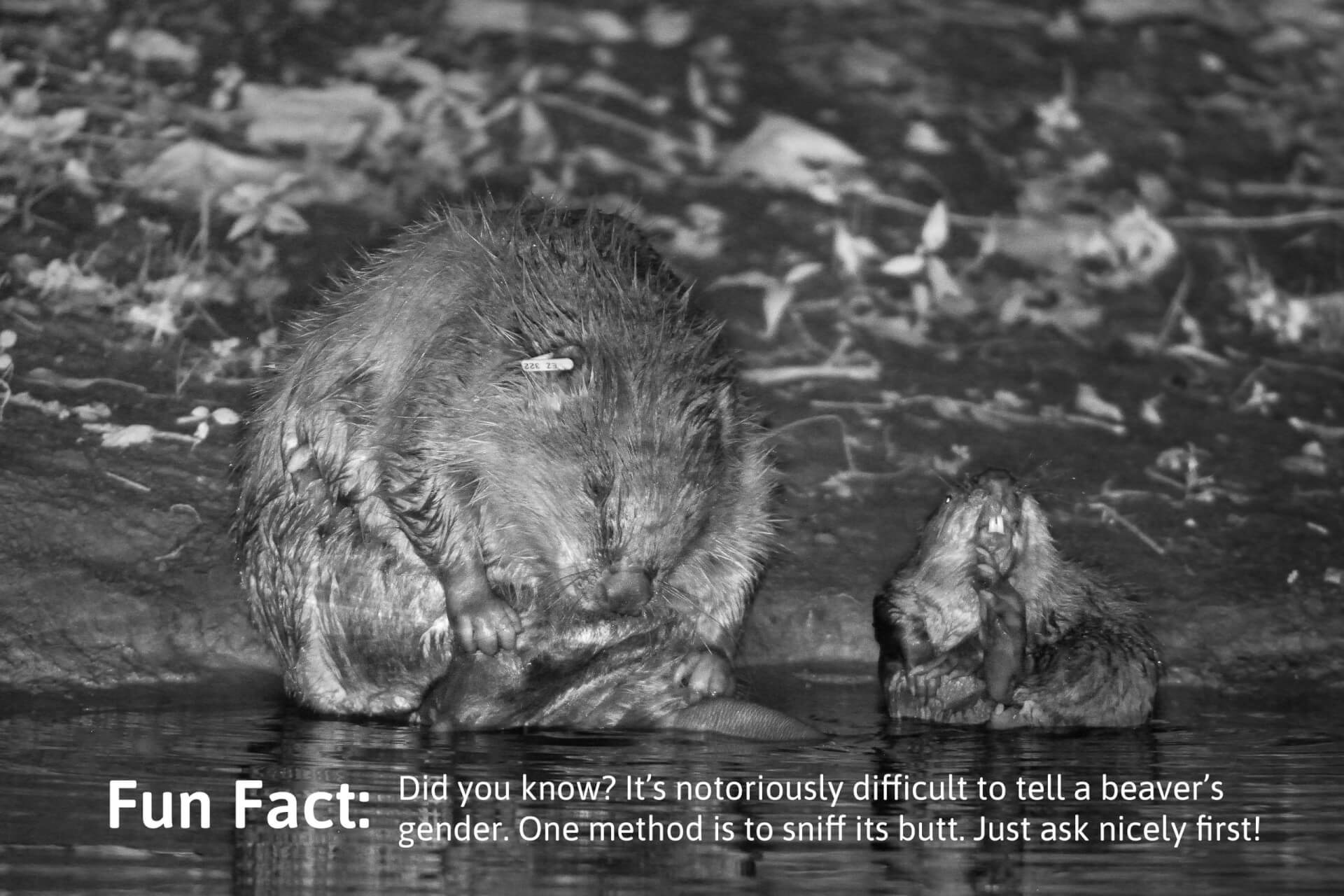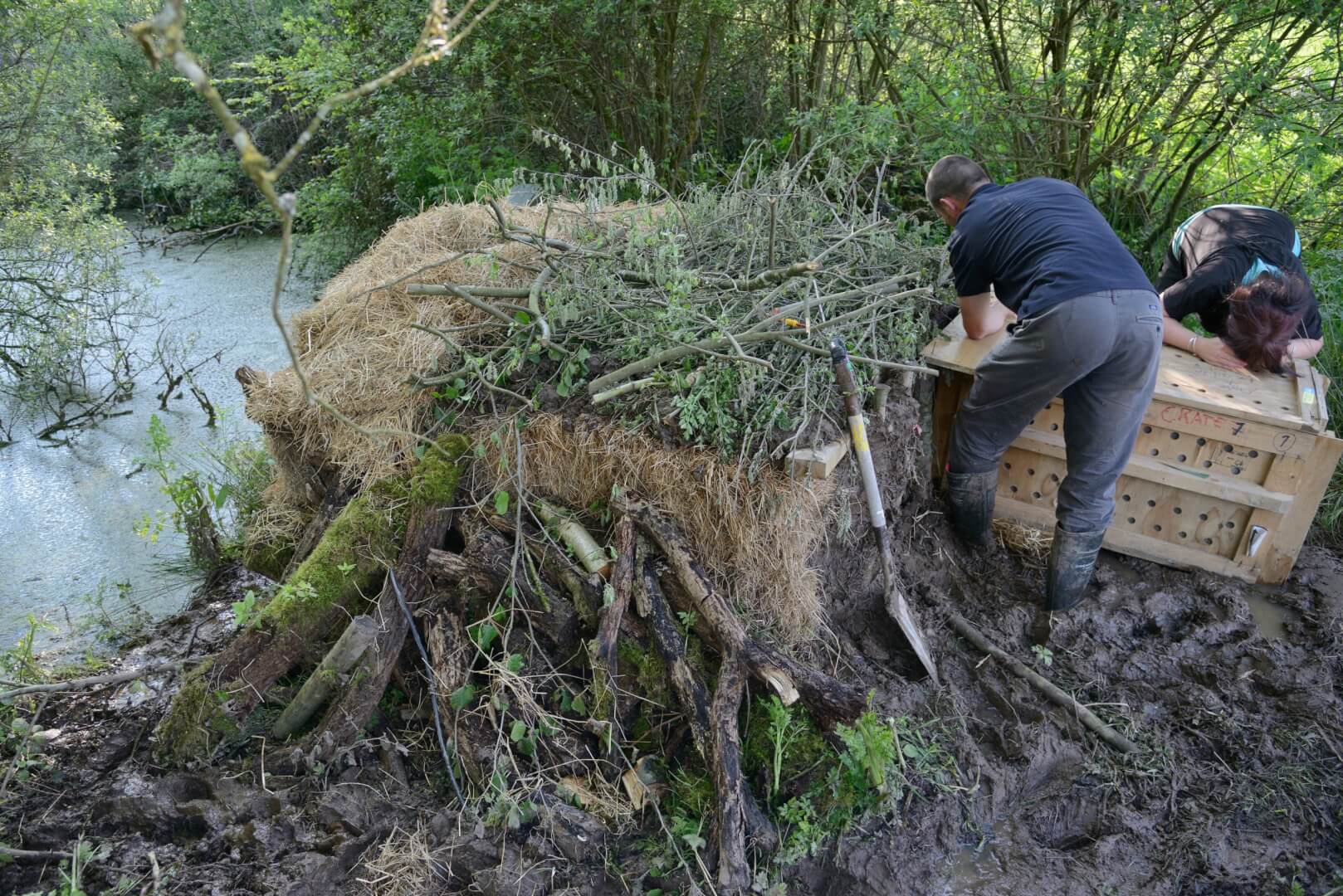Over 80 years ago, a giant panda named Chi Chi was destined for America. But politics got in the way and she ended up in London Zoo. Not that any Britons complained. Pandas in general had quickly endeared themselves to the public and it didn’t take long for Chi Chi to capture British hearts. Subsequently, she became the inspiration for World Wide Fund for Nature’s (WWF) logo and thus, also became the face of wildlife conservation.
If you look through any wildlife conservation literature, you’re often confronted with cute or big, charismatic animals: tigers, pandas and polar bears. Something fluffy. Something cuddly, seemingly. Of course, this is a marketing decision and who can blame them, cute and fluffy sells. But does this undermine conservation efforts? And is this really the right way to engage and enthuse the public about conservation? What if I were to tell you that there are growing calls in the UK for widespread reintroduction of the Eurasian beaver as part of a rising push to ‘rewild’ the British countryside?
Beavers are already back and in a few water systems in Scotland and Devon, and conservationists are pushing for further releases in Wales and elsewhere across the UK. But is this a good idea? Having asked friends and family what they thought about having more beavers here, I got some curiosity but mainly murmurs of concerns. Won’t they just cause flooding? Don’t they ravage landscapes?
After being without the furry engineers for over 400 years (they were once native to the UK), it’s no surprise that public perception of the beaver is saturated with stigma and misconceptions. And much of wildlife sentiment has this tone – it’s fine so long as it’s not in my back yard. But beavers weren’t hunted to extinction due to any perceived negative impacts. Instead, they were hunted for meat, fur and castoreum (an oily extract from their scent gland with medicinal properties as it includes a vital ingredient of aspirin which beavers get from willow bark).
As the UK continues to struggle in its fight against flooding after heavy rain – despite the increasing number of weirs being built – beavers are now being recognised as a potential solution as their dams can significantly slow excess water flows from uplands and help prevent downstream flooding. It’s taken a long time for us to finally realise this along with other wide-ranging ecological benefits these remarkable animals can bring as they quietly beaver away during the night, building dams, thinning woodland and creating new habitats for wetland wildlife to thrive. Due to this ability to change landscapes and create new homes for other wildlife, they’re classified as a ‘keystone’ species.
Despite this recognition, the UK has been a little slow to warm to the beaver and thus take advantage of their beneficial habits. Europe has already been successful in reintroducing beavers into select regions and their positive impact on ecosystems has influenced the UK where we now have two licensed beaver release trials in Scotland and Devon plus captive beaver trials in Devon, Cornwall, Kent and most recently, the Forest of Dean in Gloucestershire.
So why are many people becoming enamoured by this curious and largely nocturnal rodent and why now? Firstly, until Brexit is finalised, we’re still obligated to fulfil the EU Habitats Directive which was set up to protect over 200 habitats and over 1000 species; the Eurasian beaver is one such species. Secondly, it’s well documented that the UK has an annual flooding issue – we currently spend £800 million per year on flood and coastal defences and the cost of fixing flood damage is often in the billions. The hope is that beavers will provide a solution that’s cheap, effective and their engineering activities will also boost biodiversity. When was the last time a flood defence did that?
Wildlife and documentary photographer, Nick Upton, learnt a lot about beavers in Europe when he produced a 2002 film called Baltic Secrets: Return of the Beaver which looked at the growing numbers of beavers in the Baltic states and their largely positive influence. Now in the UK, he’s the go-to man for images of beaver reintroductions, behaviour and impact in the UK plus many other great British wildlife stories. Having spent so much time around these water engineers, he tells me that there are lots of misconceptions about them: “For example, beavers don’t actually build dams if they don’t need to. If the wetland they’ve chosen is deep enough to keep predators out of their lodge, and store branches in, there’s no reason for them to build a dam”.
Of course, for the UK’s purposes, we want the dams in shallow headwaters to ensure the risk of flooding farther downstream is mitigated. However, nature rarely behaves how we want it to. Beavers are territorial and prefer deep water. Settling in small streams farther upstream is labour-intensive as dams need to be built and managed to ensure the water remains deep enough.
I’m sure many you of can sympathise with the beaver here; why would you do more work than you have to? Mark Elliott, lead beaver project officer for Devon Wildlife Trust spoke to The Guardian about possible solutions: “You’ve either got to hold them there with fencing or have beavers back in the landscape, so all territories are occupied and they are forced back into these sub-optimal habitats, where they must manipulate the landscape.”
It’s certainly a challenge to consider and it needs to be weighed up against the benefits of other flood defences. But flood defence is only one such benefit that beavers bring; there’s a reason they’re recognised as a keystone species. Their engineering produces all kinds of new habitats for animals that are, quite frankly, struggling to thrive in the UK. Sunny glades attract dragonflies and butterflies and at Devon Wildlife Trust’s captive beaver site, the abundance of beaver-created ponds has meant that frogspawn has increased from 10 clumps in 2011 to 681 in 2017.
As habitats and ecosystems become healthier, there are many knock-on effects: other water-dwelling animals like otters and water voles thrive in new wetland patches created by the beaver; and the increased number of insects support breeding fish, birds like spotted flycatchers and bats. It’s no wonder that many conservationists are looking to beavers to provide a positive snowball effect on our ecosystems.
And a much needed one too. A report in 2016 had some pretty depressing discoveries about the state of nature in the UK. The worst headlines? Over 50% of UK species have declined since 1970 and of 8000 species assessed, 15% are either extinct or threatened with extinction. And this coming from a country with strong conservation laws and a liberal stance towards wildlife. Derek Gow, who has been closely involved with many British rewilding projects and advises Natural England, hopes the beaver will put an end to this decline: “Beavers will create and restore a myriad of wetlands and by doing so, return life to landscapes that are largely derelict, poisoned or dead.”
It’s this aspect of beavers which most excites conservationists. Not only can Beavers help engineers combat flooding but also help conservationists restore Britain’s deteriorating habitats. Mark, who has been passionately leading the beaver projects in Devon and therefore sees their impact close-up, tells me: “We’re already seeing rivers being restored and re-meandering, and totally new wetland habitats being created.”
Furthermore, a crack team of scientists from Exeter University are closely monitoring and studying what effects the beavers are having on the ecosystem and have shown they bring multiple benefits. For example, using the Devon captive beaver study site, they’ve been measuring exactly how effective beaver dams are at slowing the flow of water downstream and thus reduce the risk of flooding. At peak rainfall, the flow rate below 13 beaver dams was over 50% less than above the dams.
They’ve also found that their dams encourage the build-up of silt which can then filter out harmful toxins thus improving water quality. The detailed positive results have been published by the researchers at Exeter Uni. Another great benefit was a major change in dissolved organic carbon (DOC) where they found a 50% increase in DOC below the beaver dams. DOC is used as an important indicator of health in marine and freshwater systems as it’s a food supplement that supports the growth of microorganisms and thus the rest of the food chain. With this empirical evidence, it’s easy to see how beavers can attract so much other wildlife.
But in a world dominated by human life, reintroduction projects often have alleged negative impacts for certain groups of people and the beaver isn’t immune here. Anglers are concerned about the potential impacts on trout and salmon migration and farmers are worried about tree felling, ditch-blocking and river bank weakening. Tensions have been most strenuous on Tayside, Scotland where escaped beavers have built up a thriving population of 400 over the last decade, with many of them in a lowland farming landscape.
River dykes have breached after heavy rain leading to flooding of valuable crops with farmers there blaming beavers. Along with crop damage, they’ve also had to invest time and resources to deal with blocked ditches and felled trees. As the Tayside beavers weren’t part of a licensed trial, no conservation organisation took responsibility for their impact, which led to problems both for the beavers and locals. This meant some farmers have resorted to shooting them. In 2016, the Scottish government pledged to give beavers protected status under EU law and to implement effective management to ensure the farmers and beavers can coexist more harmoniously. More than two years on, these plans have stalled with discussions still ongoing.
Fiona Mathews, Professor of Environmental Biology at Exeter Uni, suggests that farmers could be paid to host dam-building beavers. It could well be an efficient solution to some of the farmers’ protests especially because they will lose some EU funding if Brexit does eventually go through. And with Michael Gove seemingly charmed by the beavers too, having attended a beaver release in the Forest of Dean, it wouldn’t be unrealistic to see a solution like this post-Brexit. But whatever happens, Derek Gow stoically tells me: “We must aspire, in any case, to do better.”
This human conflict is an example of the kind of issue that faces any rewilding project. But this is where the all-encompassing nature of conservation shines. There is sometimes a misguided view that conservationists only care about animals and have little regard for their impact on human life. This couldn’t be farther from the truth and the amount of research on beavers debunks this myth. This is why Dr Ana Nuno from Exeter Uni is studying public perceptions of beavers while Dr Paul Kemp from Southampton Uni is overseeing research into beaver impact on migratory fish where preliminary results suggest that trout are larger and more abundant in beaver modified habitats. These studies are important because we can only reintroduce new species successfully with local support.
All this research allows us to be incredibly well informed about how to manage beavers as Nick explains: “Where beavers cause problems locally, mesh tree guards can protect valuable trees, ‘beaver defeater pipes’ can divert water around dams, and families causing persistent problems can quite easily be caught and moved to where they would be welcome.”
Nick goes further and says: “Wildlife in the UK isn’t a ‘leisure-time luxury’ for a nature-loving minority but a necessity for us all as it helps ensure we have a healthy environment with good air, clean water and healthy toxin-free food”. There is indeed plenty of evidence to support this but I always think this can be seen explicitly too. Don’t you think people who reside in the countryside look healthier and happier than those in concrete jungles? This is why the beavers are so revered by conservationists, the benefits they bring are genuinely wide-ranging and could significantly improve our health. Are they the best animals for humans to coexist with? Quite possibly.
This is why I controversially question the relative importance of saving the giant panda. Yes, they’re adorable, and my heart often beats my head. But there are serious ecological and environmental battles facing us and we need all the help we can get. Why would we name a keystone species and then not use it to our advantage? What good is recognition if we can’t be purposeful with it? I’m pretty sure it’s not boosting the beavers’ self-esteem.
That’s not to say we should reintroduce beavers at the click of a finger. It’s absolutely right that we treat the process carefully and use the opportunity to study its impact. After all, our countryside has changed so much in the last 400 years. And it gives us an opportunity to learn more about the beaver’s habits and the many benefits they can bring to us. But there’s an issue when you need to pull up a series of charts and deliver a lecture on the beaver’s positive impacts to generate funding for it when on the other hand, you can just pull up a cute fluffy panda for wallets to spill open like an undammed river.
For a diverse range of images on the beaver reintroduction story including the human element of wildlife conservation, check out Nick Upton’s expertly captured images here.
The River Otter beaver trial ends in 2020 at which time the government will make a decision about the future of beavers there. You can support the project here.





